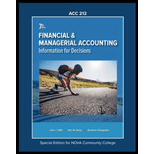
It refers to the process of recording the data into books of accounts on continuous basis. It is a process of record keeping for every transaction by a company or a firm.
Rules of Journal Entry:
The rules for journal entry are defined by 5 accounting components,
- Assets: Increase in asset should be debit and decrease should be credit.
- Liabilities: Increase in liabilities should be credit and decrease should be debit.
- Equity: Increase in Equity should be credit and decrease should be debit.
- Expense: Increase in expense should be debit and decrease should be credit.
- Revenue: Increase in revenue should be credit and decrease should be debit.
Footnote:
It refers to the ending note which is represented at the end of a financial statement which shows the details of a transaction which does not have any monetary impact on the company and cannot be recorded in the any of the financial statement but which is important for the users for financial statements.
It refers to the amount that is to be received by a company for providing goods and services on credit. It is an asset account.
To prepare: Journal entries for given transactions on accounts receivables.
Want to see the full answer?
Check out a sample textbook solution
Chapter 7 Solutions
FIN & MANAGERIAL ACCT VOL 2 W/CONNECT
- No aiPlease don't answer i posted blurred image mistakely. please comment below i will write values. if you answer with incorrect values i will give unhelpful confirm.arrow_forwardI am looking for help with this general accounting question using proper accounting standards.arrow_forwardPlease provide the correct answer to this general accounting problem using accurate calculations.arrow_forward

 AccountingAccountingISBN:9781337272094Author:WARREN, Carl S., Reeve, James M., Duchac, Jonathan E.Publisher:Cengage Learning,
AccountingAccountingISBN:9781337272094Author:WARREN, Carl S., Reeve, James M., Duchac, Jonathan E.Publisher:Cengage Learning, Accounting Information SystemsAccountingISBN:9781337619202Author:Hall, James A.Publisher:Cengage Learning,
Accounting Information SystemsAccountingISBN:9781337619202Author:Hall, James A.Publisher:Cengage Learning, Horngren's Cost Accounting: A Managerial Emphasis...AccountingISBN:9780134475585Author:Srikant M. Datar, Madhav V. RajanPublisher:PEARSON
Horngren's Cost Accounting: A Managerial Emphasis...AccountingISBN:9780134475585Author:Srikant M. Datar, Madhav V. RajanPublisher:PEARSON Intermediate AccountingAccountingISBN:9781259722660Author:J. David Spiceland, Mark W. Nelson, Wayne M ThomasPublisher:McGraw-Hill Education
Intermediate AccountingAccountingISBN:9781259722660Author:J. David Spiceland, Mark W. Nelson, Wayne M ThomasPublisher:McGraw-Hill Education Financial and Managerial AccountingAccountingISBN:9781259726705Author:John J Wild, Ken W. Shaw, Barbara Chiappetta Fundamental Accounting PrinciplesPublisher:McGraw-Hill Education
Financial and Managerial AccountingAccountingISBN:9781259726705Author:John J Wild, Ken W. Shaw, Barbara Chiappetta Fundamental Accounting PrinciplesPublisher:McGraw-Hill Education





